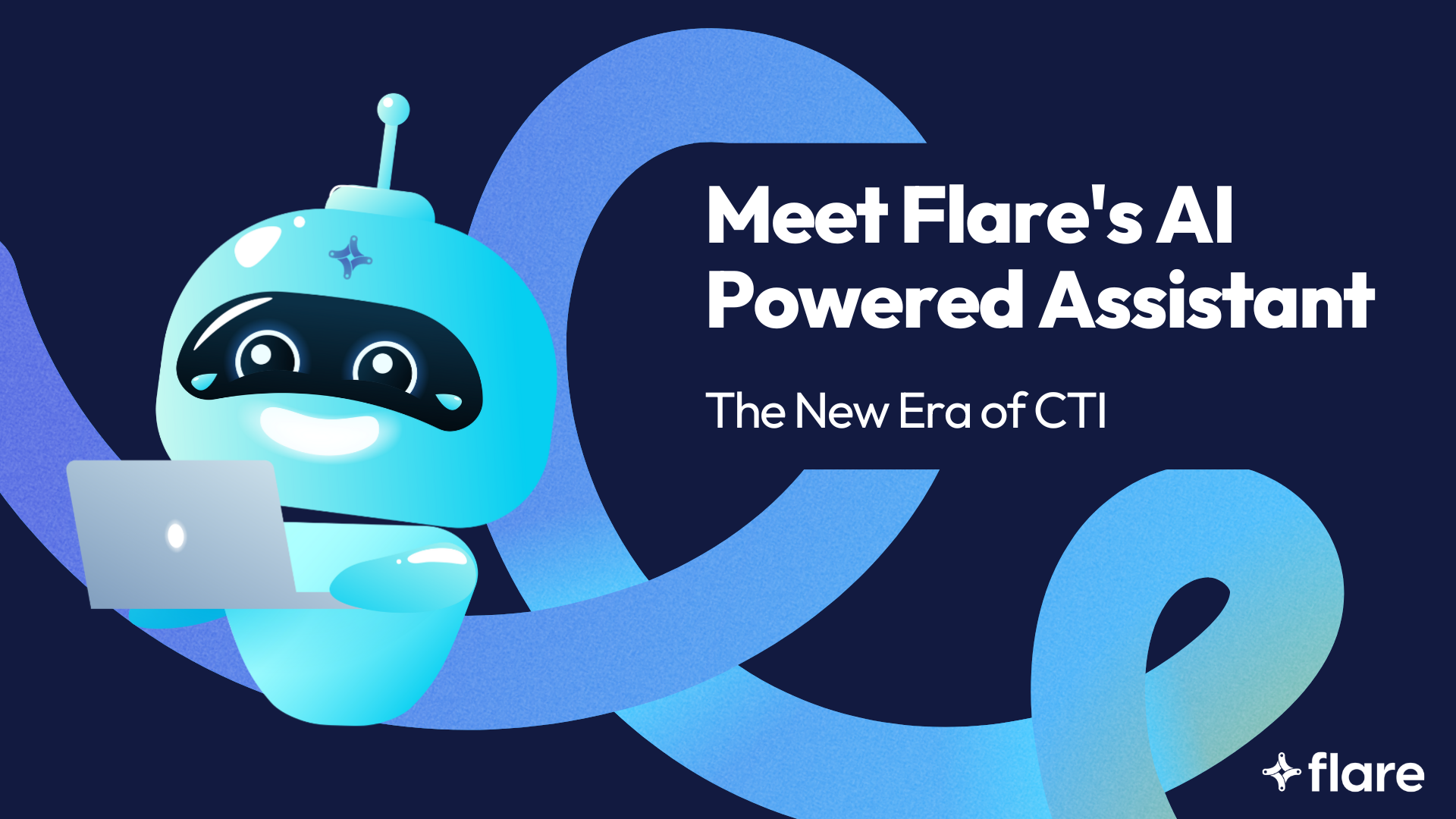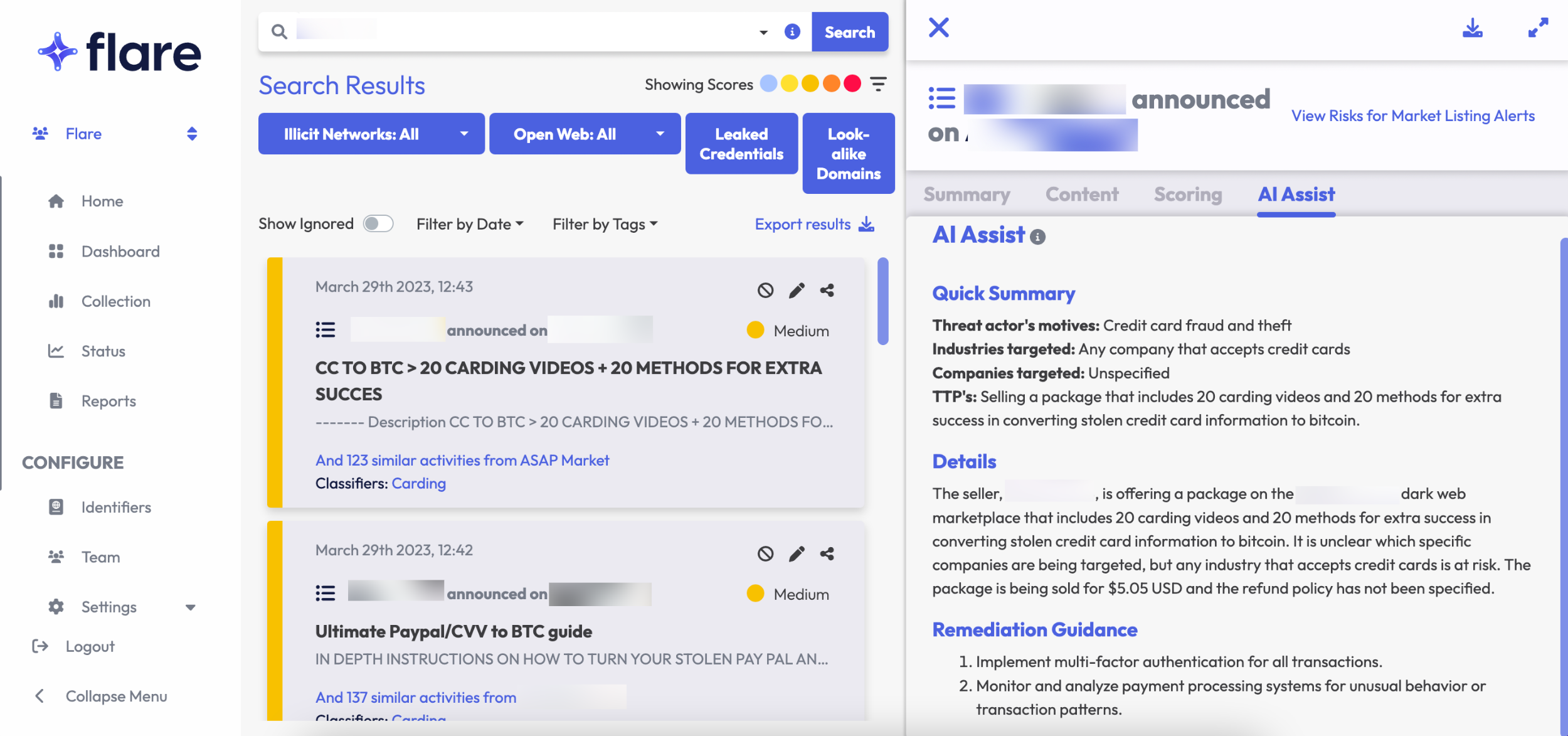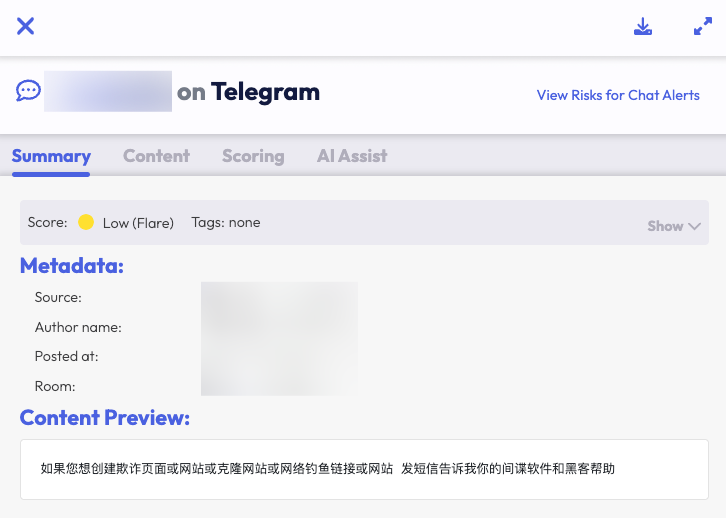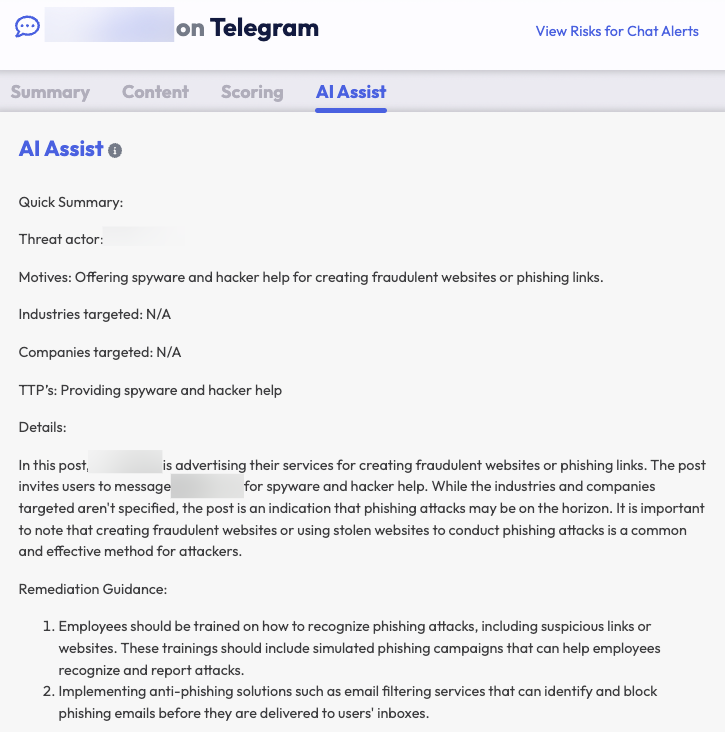
The world is changing with generative AI. And your threat intelligence platform is too.
We’re thrilled to announce the launch of Flare’s AI Powered Assistant! Security operations and threat intelligence teams can now instantly create informed, summarized, and translated reports from the clear and dark web, regardless of the language and technical jargon.
Take your cybersecurity operations to the next level: see the AI Powered Assistant in action.

Until then, we can explain more about the feature and what it can do for you.
What’s Going on with Generative AI?
Current Generative AI Trends
Let’s first get into the background about generative AI, cybercrime, and cybersecurity. There are two major connected trends with generative AI and cybersecurity:
- Generative AI applications are revolutionizing the ways we interact with each other and our environments. Cybersecurity is no exception, as AI can (and already) support(s) existing tools in becoming faster and more sophisticated.
- Any innovations can become a double edged sword, as threat actors can abuse them for malicious purposes, and generative AI is no exception. The trend of cybercrime becoming more complex and commoditized is linked with generative AI.
The malicious use cases for generative AI applications with large language models (LLM) will most likely be varied and difficult to predict, but we’ve seen dark web conversations already around generative AI.
Negative Generative AI Use Cases
Spear Phishing at Scale
Threat actors have been taking advantage of corporate sales data platforms. Sensitive company information stored in those tools combined with open source LLMs presents the opportunities for large-scale automated spear phishing attacks.
With LLMs, malicious actors could churn out phishing emails to distribute to hundreds (and even thousands) of individuals, which is at a scale that was almost unimaginable before.
Threat actors have been discussing ways to manipulate ChatGPT into writing phishing emails in dark web forums.

Voice Spoofing and Generative AI
Cybercriminals are harnessing text-to-speech AI algorithms to create convincing voices, sometimes even imitating specific people for voice spoofing scams. These realistic voices are then used to target financial accounts such as by extracting 2FA codes from unsuspecting victims.

With the increasing accessibility of AI algorithms, it’s inevitable that this trend will continue and intensify. Remaining cautious about the possible abuse of AI technology can go a long way in reducing cyber risk.
We anticipate that malicious actors will rapidly adopt and employ LLM tools for cybercrime operations, eventually reaching a point where they can set up automatic and tailored processes with very little human involvement.
Generative AI for Good
Malicious actors are already incorporating generative AI into their operations. So, for cyber teams to surpass them and better defend their organizations, evolving along with the technology is crucial. LLM capabilities represent human innovation and the significant benefits that AI can provide. But it’s up to us to ensure these technologies are for good.
This is where Flare and generative AI come in. After hundreds of conversations with cyber threat analysts about their challenges with external threats, our team delivered a capability that will lead us into the new era of cyber threat intelligence: Flare’s AI Powered Assistant.
Flare is the only CTI/DRPS platform that takes an AI-first approach to provide cyber teams with the right information, at the right time, in the right format to empower them to make rapid security posture changes based on emergent threats.
Flare’s AI Powered Assistant in Action
Flare leverages cutting edge LLMs into our exposure detection platform. So what can it do for you?
- Rapid Information Synthesis: With natural language processing, this integration can review massive amounts of data instantly, accelerating the threat assessment process.
- Foreign Language Summarization: The dark web is global. Threat analysts can overcome language barriers in threat intelligence by understanding threats with the quick informed and translated reporting.
- Explanation of Complex Events: Cyber threat events can be complicated. With pinpointed information incorporating the bigger picture, cybersecurity teams can more simply make appropriate decisions and take actions to protect their organizations.
First Glance at the Generative AI Capability
Threat analysts may not always immediately understand the meaning of, risk level of, and remediation steps for the alerts.
With the AI Powered Assistant, analysts can click into an event then receive a quick summary, the summarized details of the event, and remediation guidance. Let’s take a look at an alert in English:

The AI Powered Assistant quickly generates a natural language explanation of the alert, which is specialized for each activity type.
A Closer Look into the Generative AI: CTI Linguistics Team
Threat analysts don’t need to know every language to be great at protecting their organizations, and here’s where we come in to help.
Regardless of the language of the original posting, the AI Powered Assistant can provide context for threats to simplify your team’s decision making process in English (or French, if that’s the language you’ve chosen for your account).


Though this alert is originally in Mandarin Chinese, threat analysts can easily access context on suggested next action steps easily. Leverage our cyber threat linguistics team 24/7/365 for easier remediations.
Flare and Generative AI
Our approach at Flare is to embrace generative AI and its possibilities, and evolve along with it to provide cyber teams with the advantage over malicious actors. LLMs can be incorporated into cyber threat intelligence to be an essential capability to more rapidly and accurately assess threats.
Take a look at how Flare’s AI Powered Assistant can level up your cyber operations.


